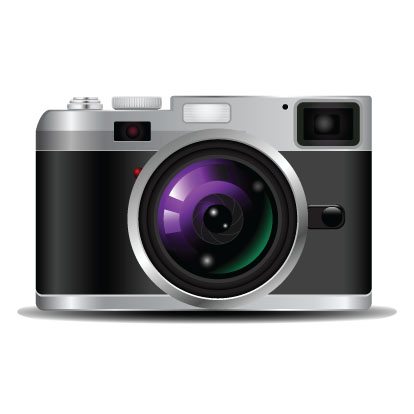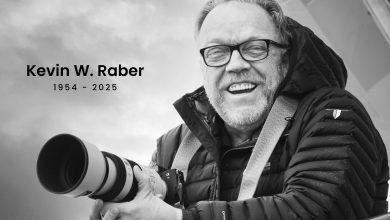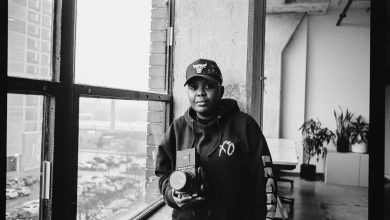TWiP 320 – Reflecting on Mirror-less
Hosts: Frederick Van Johnson
This week on TWiP…
- A special roundtable discussion with mirrorless mavericks Gordon Laing, Trey Ratcliff, Giulio Sciorio, and Doug Kaye
This week we're back in a Google Hangout and Frederick is joined by an all-star panel of photographers to delve into all things mirror-less. What are mirror-less and Micro 4/3 cameras? What are the advantages and disadvantages of mirror-less technology? Which manufacturers are making the best mirror-less cameras? We answer these questions and more during our round-table discussion.
Take our TWiP Survey
Hey there TWiP listener. We're always trying to make TWiP better – so please take a few moments to sound off with your thoughts on what you'd like to see more/less of in future episodes by filling out our TWiP listener survey.
Announcing TWiP's newest ViewBug photo contest:
“A Picture Is Worth A Thousand Lyrics”
We provide you with a song, you listen to it and interpret the song as best you can in a photo. This contest's song is: “I Believe I Can Fly” by R. Kelly, as performed by the artist Charice – you can watch her perform the song here.
Note: Entries for this contest will be accepted through August 31st. Enter NOW! Watch Frederick explain how he came up with this contest in the video below!
Enter The Contest!Please Support our Sponsors:
Shutterstock
This episode is brought to you by Shutterstock.com. With over 26 million high-quality stock photos, illustrations, vectors and video clips, Shutterstock helps you take your creative projects to the next level. For 30% off your new account, go to Shutterstock.com and use offer code TWIP8.
Connect with Our Hosts & Guests:
Gordon Laing: Website, Twitter, or Google+
Trey Ratcliff: Website, Twitter, or Google+
Giulio Sciorio: Website, http://www.smallcamerabigpicture.com/, Twitter, or Google+
Frederick Van Johnson: www.mediabytes.com, Twitter, Google+
Credits:
Pre-production by: Bruce Clarke
Post production by: Suzanne Llewellyn & Vince Bauer
Bandwidth provided by: Cachefly
Intro Music by: Scott Cannizzaro








I wish someone would discuss using mirrorless cameras with off-camera flash. I know all-manual ocf is possible on some of them, I am also interested in TTL, HSS and what accessories are used to do it. This is the big thing keeping me from making a switch from Canon right now.
Well you have off-camera TTL/Auto/Manual from the built in flash with the FL-36R, FL-50R, and FL600R (plus a couple of others that I forget at the moment). I think the Oly Metz flashes support it too but I haven’t tried it. Full manual and TTL control with three groups on the back of the camera. It’s very easy to access and set. High speed sync beyond 250. The 600 (and I think the smaller 300) also works as a commander too but that’s limited to the E-M5 and presumably the upcoming E-M1. In testing the other day on a slightly overcast day (Seattle summers are often good at that), I was able to control a FL-50R with the built in pop-up from about 50 yards. I have three power settings so I might even stretch it farther. That test will come later. I kept backing up and ran out of room for the place I was at. Pop up is a little bit of a pain over using a commander. Sometimes I’ve used a “puffer” diffuser to bounce it around so that the flashes are sure see it. But even I was surprised the other day that I was reaching well beyond the Olympus specs and getting full control. I could barely see the subject and flash. And yet it was still firing HSS on the subject just fine.
Olympus has offered this for quite a while. It’s included even on their cheaper consumer SLR cameras. It’s been startling to me to work with Canon photographers that had to buy much more expensive cameras to get this basic functionality.
Actually I meant 50 feet. Spec is 21 to 30. But we’ll see if I can stretch it to 50 yards if it’s dusk/dark…
Two years ago, I purchased a Samsung NX200 to use as my “carry
around” camera, and now the NX is my “go to” camera. I chose
the Samsung after looking at the Sony NEX cams and a few micro 4/3
cameras. The decision was made based on image quality, price, and
lens availability. At the time, Sony really didn’t have much to offer
in the way of lenses and the price was just out of sight. I now own
the NX200, the kit lens, a 30mm f/2, a 50-200mm zoom and adapters for
my old Canon and Nikon lenses. The Nikon D300 now stays home when we
travel.
It’s not all rainbows and roses for the NX200, though. For
example, focus is noticeably slower (especially in low light) than the
D300. Writing to the card can be slow; this is especially true after
a rapid series of exposures. Shutter lag, although good, is not
quite as quick as the D300. Samsung concentrates on phones, making
cameras is an after thought. Because of this, electronic flash
specifically made for this camera are few and far between. I use my
Nikon flash units in manual mode and I’m happy with the results. On
the down side the max shutter speed that with sync with flash is
1/200 sec. One final gripe is the battery life. These low ampere hour
cells are just barely okay. I always carry 3 batteries with me and I
know I’ll be using 2 of them.
On the sunshine and unicorns side, the small size, very high
quality lenses, 20+ mp images sizes, and ability to adapt almost any
lens from any manufacturer, have made me a true believer in this
technology. When Samsung comes out the the NX30, I’ll be seriously
considering the upgrade. These cameras are so good that I may end up
with a couple more bodies and just give each one its own lens. I’d
still pick Samy over Sony, primarily due to image quality (Samsung
lenses are 1st rate) and price.
My walk around camera is the D3, I am one of those people who does not like small cameras, My first pro camera was the F2 that weighed about 6 pounds with a motor drive. I maybe have used my iPhone 50 times in the last year.
To say sensor size does not matter is not really correct what you are dancing around is resolution. Resolution is lens quality, sensor quality, format size and megapixels.
I am looking at the Leica for a mirrorless camera because of image quality and ruggedness. The auto stuff is nice but I shoot half the time manually.
As always a good show.
I bought my M4/3 a few years ago after much window shopping – I settled on the Lumix GF2 plus the Lumix G 14mm F/2.5 ASPH Pancake PRIME Lens. I love this combo as much today as I did when I bought them both brand new back in 2011. I will admit that my DSLR has been pretty much shelved as my GF2 has taken over most of the digital duties alongside my iPhone. My GF2 lacks most of the fancy features of todays latest M4/3 cameras but as it goes, I don’t use half the features on my GF2 – my day-2-day shooting style never strays too far from a basic in-camera setup with 4.3 ratio, RAW+Jpeg saves, and very little color and contrast tweaking. I totally love that my GF2 sports a flash hot shoe, something that seems to be missing from a lot of today’s M4/3 cameras. I often use a wireless trigger with several off camera strobes as well just mounting older funky looking used flashes directly on my GF2 when out on the street. One day I’ll buy another M4/3 but for now I’m set.
The autofocus functionallity keeps coming up, but there are other things that are missing too. Things I use today with my Nikon. But no one touched on them.
1. Long lenses, the choices beyond 200 mm (Full Frame effective) are very poor if they exist at all.
2. While Olympus for instance has TTL like flash, the RF vendors like PocketWizard don’t put out anything. The choice of strobes is also limited.
3. Other accessories such as L-brackets, just try and find one for an Olympus or a Panasonic.
4. I believe the Sony NEX units can use the Sony A-mount, but there the lens selection can’t match Canon or Nikon.
What do I really want, I want Nikon to come out with a mirrorless camera in a D7000 size body that uses an APS-C sensor, and can use the existing Nikon DX/FX lenses and all the other stuff. If I need to go light, I can with DX lenses, which are getting better. If I need it I can use FX lenses too, best of both worlds. Are they optimized for mirrorless, no, but there are a lot of them out there.
Actually, the 50-200 is 100-400 equivalent of FF. Or the 35-100 (70-200). Or the 70-300 (140-600). Or the 150 (300). And that’s just in the Oly brand. Take your pick depending on your budget. Some of these are “big” lenses but still smaller and cheaper than a comparable Canikon at that aperture. With the new E-M1, focus should be faster and more dependable.
Strobe choices are same as the others. Big ones and little ones. All with excellent off camera support. No TTL wireless yet beyond the optical but it will come.
Correct on all counts, my point howerver was fast long glass. There are no equivalents to 300 or 400 f2.8, or other longer faster glass. The stuff that is available is compareable to the slower super zooms available for all the other platforms. Unfortunately the slow glass isn’t as useful for sports or wildlife, which something like the E-M1 just might now be able to take advantage of.
Hopefully cameras like the E-M1 will get enough sales to become interesting to more of the third party vendors. Granted there is some, but there isn’t any where near the selection of stuff you can get for Nikon or Canon. As you point out in areas with generic standards in place there are some things that are possible, just not all the bells ans whistles.
There is no doubt that Canon an Nikon are bigger these days.
But don’t forget the
90-250 f2.8
300 f2.8
35-100 f2
150 f2
Those do sound comparable or faster. Not cheap lenses. But also double the pull while still matched or faster. Deeper depth of field but that might not be a bad thing at those powers.
We’re just waiting to see what the focus speed will be once the new body is announced.
With the exception of the 35-100 f2.8, I didn’t find any of the lenses in m43 mounts, but I did find them in the 4/3 mount. However the 4/3 mount lenses are even more expensive than my Nikons and look heavier than the equivalent full frame Nikon lenses. So what’s the point of switching to a small body and having to carry monster lenses.
Hopefully someone will release some longer fast glass for m43 mounts. Hopefully the E-M1 phase detection and longer fast glass will be the thing to start drawing more people in.
FT glass and with aperture and focus easily fit on MFT with a small adapter. That doesn’ count all the manual lenses from a ton of of other makers. You did say you wanted big fast glass. I think he gave you that. So a Nikon 300mm f2.8 on B&H is 10.5 inches, weighs 6.4 pounds, and $5800. A weather sealed Oly 150mm f2 is 6 inches, weights 3.5 pounds, and $2500. The Sigma is a little cheaper than the Nikon but still more than the Oly. Now that 150mm is still going to look like a beast on an E-M5 and I’m not sure if that would be my lens choice. But fast glass means big bulky glass on any camera and those are two comparable lenses. The FT glass is going to have double the power (potentially good) and double the DOF (possibly good, possibly bad). It’s also nearly half the length and half the weight. Half the cost. You have him on focus. On a current MFT, it’s not going to focus as fast. The E-M1 may change that. May make it easier to hold as well. But that isn’t official yet.
Actually I’d like long fast class, I’d be more than happy to give up the big part 🙂 I forgot about the 2x crop, so that makes it bit more reasonable. Thanks, that offers some much more attractive options, assuming the E-M1 is as good as we all hope it will be.
Yes that’s what I’d like Nikon to do,too. I like the feel of an SLR in my hands but would give a mirrorless a go if it fitted all my lenses and worked with them. As Nikon are such an old and reputable camera company they’ll probably wait until they can address all the problems you’ve listed before they put one on the market. I think it’s still a work in progress. It’s OK for people like Trey Radcliff – he can afford it!
Gordon was a great addition to the show. I really liked all his gear insights. Hope to hear him more.
I love all of the mirrorless talk. I’m kind of stuck on the notion of one system for “pro” AND walk around cameras. I just want to buy one lens mount.
Nobody really talks about the so called “pro” m4/3 camera for still shooters: the GH3. Would that compete with big DSLRS for weddings, sports, low light/high ISO — basically all of the things that beautiful mini mirrorless can’t do? Then I could use the GH3 for challenging pro situations (and its big enough to look nice and intimidating and hold its own against “Uncle Bob’s DSLR” at a wedding), but the same lenses could go on a PEN or the new Panasonic GX7 and be my walk around.
For DOUG KAYE: I purchased a NEX7 system based on all of the raves, the specs, and what seems like the ultimate feature set: articulating screen for waist level shooting on the street, killer EVF, lots of megapixels, killer videos, big sensor, etc. But I truly HATE this camera and have such buyers regret. And I’d grabbed a bunch of lenses too, so am extra miserable I just never warmed up to the interface and menus. They don’t feel well organized and my brain is grooved for Canon style simplicity and direct access. Then there’s the so called “video” mode. I thought I was buying a “hybrid” shooter, as Will Crockett likes to say. Maybe so, but the Sony can’t shoot more than 8 minutes of video without overheating and shutting down!!!
This was a really interesting talk. I purchased a Fujifilm X-E1 with kit lens that I use as a walkabout camera together with my iPhone. I really love this camera. This is a welcome addition to my D3 and D800 that I still use on a regular basis. Like the Ford advert… And is better than Or!
I agree a very interesting conversation. I’m not anti-mirrorless but I’m not going to buy nor recommend one anytime soon either.
First, I can’t really afford multiple systems. Obviously, many of the speakers can and do. As a photography instructor for beginners I can’t really recommend systems that aren’t mature enough for me to feel confident that my advice would be valid for more than a couple years. Many, many entry level photographers need to know that what they buy will last (and be supported) at least 5 years. I think this genre is definitely in transition and will be for awhile.
Secondly, and more importantly for myself, I have become quite accustomed to and love a professional build and features on my Nikon bodies. I teach photography and recently had the opportunity to use one of the Sony NEX’s and could never live with it myself. Confusing menus, hard to adjust common settings and just too darn little. How do you teach proper handheld technique when your elbows won’t even comfortably reach the rib cage with those little things? The student with that camera had a bit of trouble keeping up with the Canon and Nikon shooters that seemed to find the ISO, exp. comp and other settings so easily.
Third, I agree that the quality is becoming and will continue to be great for these cameras but I heard a lot of comments about …”I just send my images to Google +” and other similar things…well I just archive the highest quality fine art images that I’ve prepped for the highest quality prints. The two standpoints don’t seem to overlap.
However, I’m ever the optimist and wouldn’t be surprised to see full pro-level mirrorless bodies that do everything I’d want soon, I just don’t see them now.
You teach what you know and you’re comfortable with that. In 2000, famous pro photographers were recorded in a video documentary talking about how digital photography would be a slow transition and wouldn’t be settled for another 20 years. That’s what they knew. Film was what they were comfortable with. That’s what they expected.
2014 will be the 5th year of Micro Four Thirds. It doesn’t dominate the market but its still around. On the Olympus side, that MFT framework is built off of at least 10 years of Four Thirds SLR hardware and lens history (and a heck of a lot more camera tradition well beyond that). I can’t speak to every Olympus SLR and MFT camera, but I’ve seen select models take a drop and a bounce and a heck of a lot more damage and still keep running fine than comparably priced Canons and Nikons that required a trip to the shop. Their build is usually pretty solid. Their optics are amazing. Because they are farther back on market share, they have to innovate. New functions often appear in their models a couple of years before the others catch up. That short flange distance on an MFT will adapt almost any lens out there. It has caused a boom in legacy glass on eBay. Assuming you have been at this as long as I have, you probably have old film glass in your closet right now that would be fun to play with.
Maybe its worth another look and an open mind.
TK, I resent the implication that I have a closed mind about these cameras. I don’t believe that I do. We don’t know each other but no one I know has ever called me that. I’m just trying to add to the discussion. I’m not on a side in any perceived argument. I don’t see it as an argument.
You picked up on my mention of professional build but it is really the professional features that I meant to emphasize in my comment.
And from the discussion, it sounds like sensor size especially is evolving. Photographers are going to demand larger sensors for quality reasons (perceived or real) don’t you think? And wouldn’t that make equipment purchased now maybe obsolete in the near future.
I’m sincerely not trying to insult you. I’ve teach too and have taught beginners for a couple decades. But that experience has also taught me that people know what they know and are comfortable with what they know. We’re creatures of habit. In any large city, you can pull a Canon or Nikon off the shelf at every camera store from the pro shops to the big box stores. They are bigger brands with bigger channels and people know more about them. Almost every beginner has one.
That’s not the same with Olympus or Sony or Panasonic. Also, the MFT crowd will always take heat on sensor size. Traditionally that makes for poorer low light performance and greater depth of field. They also gain more power and optical quality on smaller and cheaper lenses (see below) and greater depth of field (this can go both ways depending on your use). MFT is easier to smaller to pack and lighter to carry.
The pro features comment does stump me:
Oly had sensor cleaning and articulated displays before the other bigger makers caught up. Oly’s have full manual control. True the ergonomics are better in the more expensive models and that will improve with the E-M1. I have had RAW in all modes. I’ve used Canons that disabled that in some modes in sub-$1000 models. I have on and off camera strobe with full control of three groups in manual and TTL. I once had to explain to a Canon student that his camera just didn’t do that in his price range. The unannounced E-M1 has an extra PC jack. Olys have AF fine adjustments that know the lens. Mirror lock up. Button customization. There is all weather sealing that will include freeze protection. I was tired and bobbled an MFT onto a sidewalk in Paris from four feet. It bounced twice, kept running, and has been my trusty travel camera ever since. Not something that mirrored cameras like. How about the best multi direction stabilization of any camera currently in production? And it works with any lens you put on it? Or the upcoming wireless live tethering? All that sounds good for a pro too. So I guess I’m stumped on what “pro” features you still need.
Photography is all about compromises. As you know, we teach that every time we explain shutter, aperture, ISO. A Hasselblad has advantages over a Canon which has advantages over an Olympus. But that goes both ways. A smaller form factor will have disadvantages but also open up advantages that its larger cousins cannot touch.
I appreciate the apology. I didn’t think you were trying to but it certainly came across that way. I was just discussing the issue. I could never have survived 35 years of being an instructor with a closed mind!
I really don’t have an ax to grind in this, I know that there are excellent choices in the mirrorless categories.
As for the pro features I mention…I don’t have time now to list everything but it is the little things that come with Nikon pro bodies and lenses that I love… Built-in or available vertical grips, compatibility with RRS model specific L-Brackets, exposure modes that stay selected (no dials that turn by accident), no soft buttons on screens I can’t see when I am outside…stuff like that. I’m sure a full list would have dozens of items.
Some times the optimism I see for M43, paired with this open distain for DSLRs, sounds a lot like the netbook craze from a few years back; remember how *everyone* was going to toss out their clunky expensive laptops for the wonders of cheap, lightweight netbooks?
Then as now, those who desire the revolution may be correct in its coming but very wrong about its nature and its winners.
For netbooks the real threat was from smartphones, tablets and cheaper lighter full-service laptops. Apple and Samsung won, not Asus and the like.
Now I’m not saying that M43 is an analog to netbooks… although the cramped mushy buttons do hold a striking resemblance.
Maybe DSLRs can’t ever be as light as M43 but then again maybe the real market winning question is can they get light enough while offering something else, say better ergonomics and battery life, that people will want them anyway?
I would gladly forego any current M43 kit if I could just loose 1/2 the weight of my current DSLR kit; poundage bothers me far more than size. Indeed, I see my big hand-full of a camera with its well placed controls as being much more helpful to my photography than is the ability to put my other camera in my pocket.
It’s all good either way. As long as I have choices.
As pops up so often in these and other discussions of mirrorless cameras, these machines are somehow…addictive! Add me to the legions who tried one (E-M5) out of curiosity or experimentation or back-up and now find, unexpectedly, it is the only camera they use.
Nobody really talks about the so called “pro” m4/3 camera for still
shooters: the GH3. Would that compete with big DSLRS for weddings,
sports, low light/high ISO — basically all of the things that beautiful
mini mirrorless can’t do? Then I could use the GH3 for challenging pro
situations. To buy Olympus OM-D please visit us online.